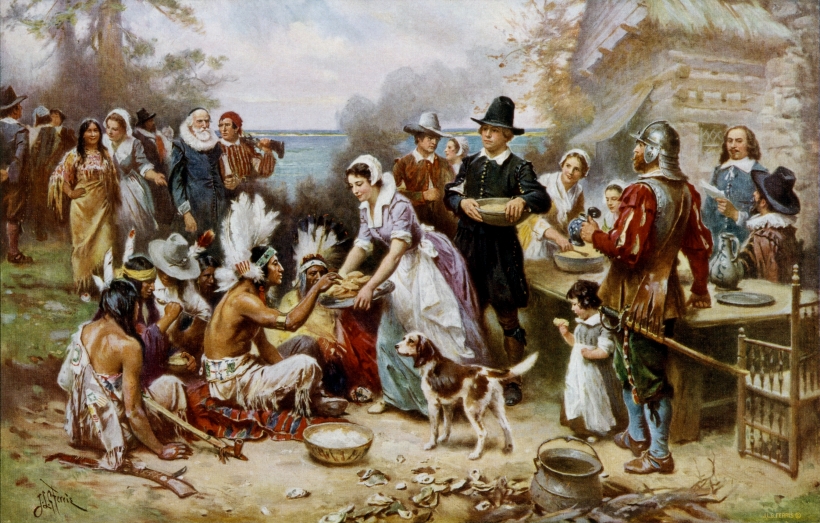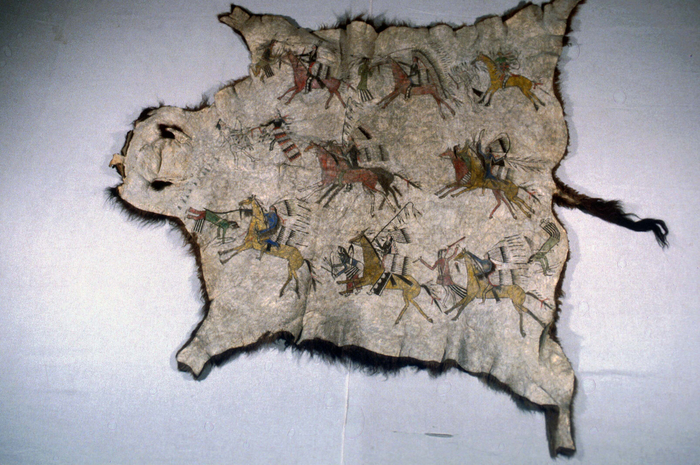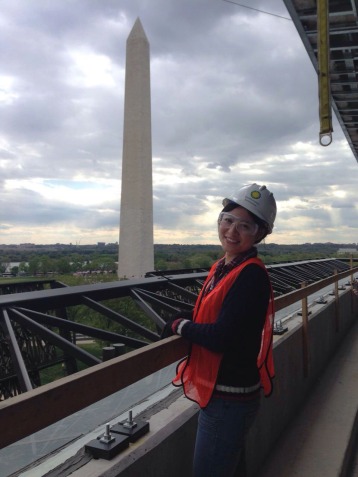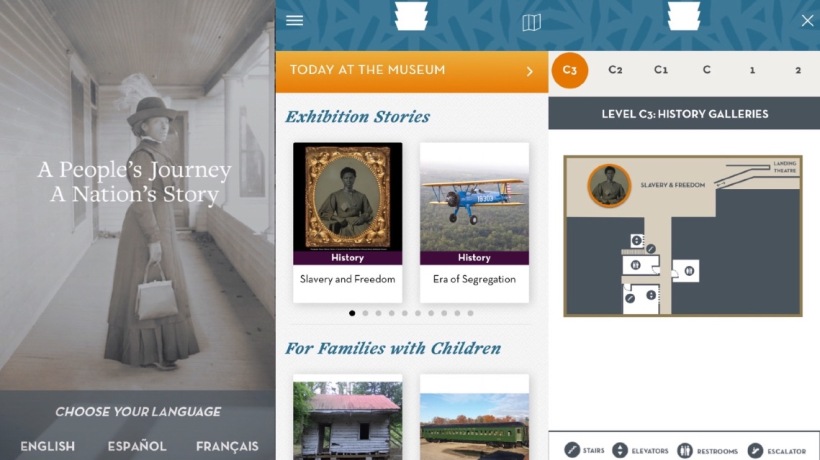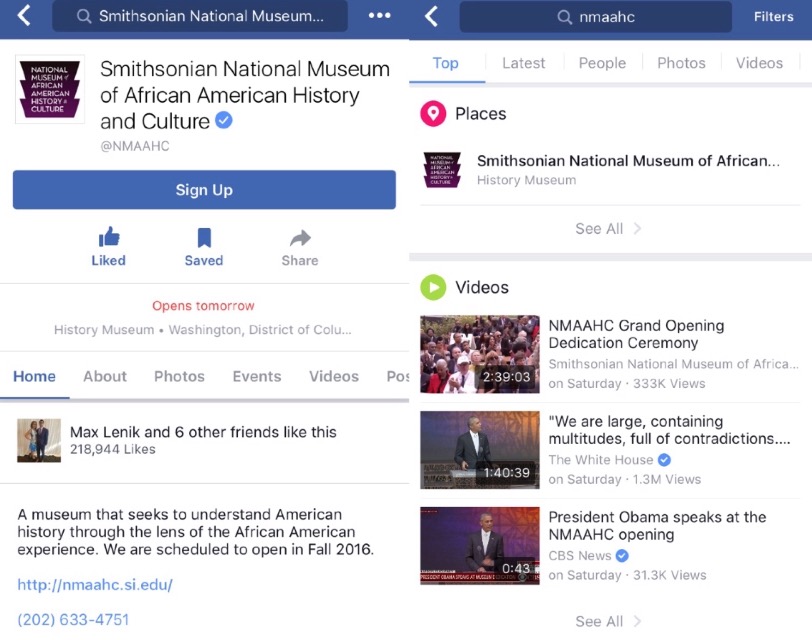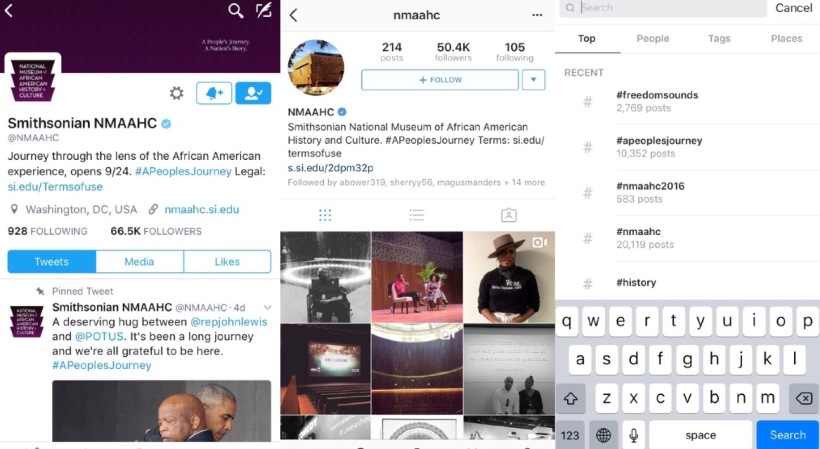So I was in the Smithsonian’s Hirshhorn Museum and Sculpture Garden today for the night’s event “MeetTheArtist,” held by one of the six artists who contributed to the “trippiest exhibition” of the Hirshhorn – the “Suspended Animation” – and as a preparation, I revisited this weird but fascinating show, again.
It was really hard to understand what was going on for the first time I saw this show. I was curious, confused, feeling weird, and even more, it really freaked me out to see the contortion of President Obama’s eyes; I mean, I thought it was the only work that was recognizable and understandable, until those unrealistic flowing eyes came out. But, the fascinating part is, every time I visited them, I made some progress, and I came to understand. It feels like seeing something through the scrim though – distanced, unreal, and tough.
I love to watch the “Emissary in the Squat of Gods,” the last piece of the whole show, created by Ian Cheng. It is a two-screen live simulation animation, with one showing a girl and an owl, and the other showing a group of people moving around. It looks like an computer game from the early 2000s – low rate, low resolution, and choppy – and characters sometimes even twisted with each other, but they are actually “alive” and moving controllably, as the label said.
I really didn’t get it at the first place. I even couldn’t understand the term of “live simulation,” even though I checked Google, and here’s the answer:

I also looked through Ian Cheng’s website, and it shows that a simulation is
game for staging “ideal + ideal = truths” processes, a mutation machine for growing 3s out of ideals, enacted at a scale that humans can perceive. Like a comedy setup or a laboratory experiment, the premise of a simulation may be artificially constrained, focused on just a few elements, or staged to confront materials that would never encounter each other in the messy wild … once a simulation begins, everything that transpires from its premise occurs truthfully, untampered by human bias or knowledge. The materials, forces, and inherent energy artificially assembled here act and react on their own terms, writing themselves, generating 1 +1 = 3 truths.
Okay, to my understanding, simulation is like creating a/some feature(s) and giving them some specific paths, and then letting them go. Their behavior will follow some pre-set logic, but no one has to control them once the show started. Like Ian’s work here, these characters – people who live next to a live volcano and the girl – they all have their own patterns of “life”. They’ve been hearing an instructive voice from time to time, but they could choose either react or not, and how to react. Especially the girl, who had been improved and programed with some “self-conscious,” was given the possibility to grow and explore, like an intellectual.
–sounds familiar, ahh? Are you thinking the #WestWorld, like me?
Well I’ve been always interested in the computer, technology, AI, and stuff like that all the time. I, also, have been thinking the relationship between us and the computer, the internet, for awhile, and I found it was worth to ask – 1. are we really as unique as we thought? 2. are we really using the technology like we thought, or is the technology “using” us? I know it sounds stupid, but just look around and think back a little bit, could you come up with one single day that you operated normally without using any technologies? My answer is “No,” I am now pretty much relying on my phone and my computer of everything, and as long as I want to keep my life working as usual, I have to get some help from the tech. We, the human being, now are trapped within the “Internet” that we made, and basically we live in this way unconsciously, like following some significant patterns.
Also, think about these characters in Ian’s work, they’ve created in some ways, but they do have the abilities to do choices, to learn, and to improve. This is how this “animation simulation” works, like in the real world, like they are real. When comparing them together, I couldn’t help to wringer the uniqueness of being a human – for thousands of years we consider we are different and intelligent based on the ability of learning and improving, but what if others also could do?
I would say our whole world now is about technologies, Internet, and algorithms, the expanding of knowledge has been accelerated as fast as ever, whatever we do and wherever we are, we shape ourselves to adjust the whole thing. We are curious, confused, and anxious, because we start to realize we’re not unique, we start to feel losing control.
I am neither an artist or a computer programmer, so what I’m saying here is totally based on my poor knowledge learnt online and my personal feeling towards Ian’s “Emissary in the Squat of Gods” in the Hirshhorn. Agree to this article or not, I would like to discuss it with you anytime. If you haven’t seen this exhibition, please go and visit, the show will stay there until March, 2017, and I would love to hear what do you think after.
Cites:
Alex Greenberger, "The Cyborg Anthropologist: Ian Cheng on His Sentient Artworks," ARTNEWS, accessed November 1, 2016.
Bernard Zeigler, Alexander Muzy, Levent Yilmaz, "Artificial Intelligence in Modeling and Simulation,"
iancheng.com
Sadie Dingfelder, ‘Suspended Animation’ may be the Hirshhorn’s trippiest exhibit yet, the Washington Post, accessed November 1, 2016.
